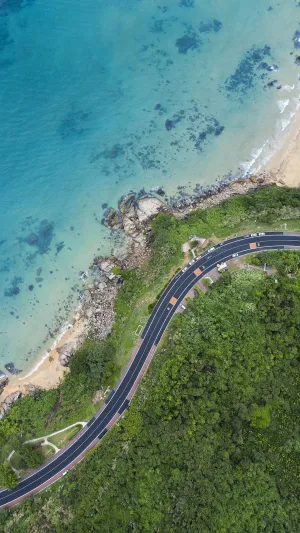The coastline is the dividing line between the ocean and the land, and more precisely, it is the line where the seawater reaches the extreme position of the land. It changes with the ebb and flow of the tide.
The rise and fall of seawater, caused by tides and storm surges, results in a constantly shifting boundary between the sea and land.
This means that the coastline is not a fixed line, but rather a collection of numerous boundaries between high and low tides. It exists as a strip in space that is constantly changing.
When mentioning the coastline, people will naturally associate it with blue waves, golden sands, and fresh shellfish on the beach and reefs. In fact, as an ecological transition zone between land and sea, the value of the coastline goes far beyond that.
Coastlines are rare natural gene pools and have various ecological functions such as water conservation, pollution degradation, water purification, and climate regulation. The coastline is also a valuable resource for the development of the marine economy.
The coastline is significant to a country. The importance of the coastline is not only because the ocean now has rich sea resources and non-living resources, but also can expand the scope of the ocean territory and develop the marine space. It is the innate condition for the development of excellent ports. The winding coastline is extremely conducive to the development of marine transportation.
Coastlines hold immense value as they offer a means to communicate with various countries across the world. Even a single point on the coast can connect you with the entire ocean, and thus, the rest of the world. It is important to note that the value of a coastline is not solely dependent on its length. While longer coastlines do provide greater connectivity, even shorter ones hold significance in connecting different areas of the world.
Even if a coastline is short, it can still provide access to the vast ocean and connect with numerous countries around the world. This means that the length of a coastline is not the only important factor, as its presence or absence can bring about significant qualitative differences. In other words, the significance of a coastline lies not in its length, but in the opportunities it provides.
The gradual but significant impact of coastline changes on human beings cannot be overlooked. The proper development of a coastline can lead to the formation of excellent harbors, which can be crucial for countries that rely on overseas trade for their development, particularly the maritime industry. However, as the ocean erodes towards the land, it can increase the humidity of the land and lead to an increase in precipitation.
Coastlines are vital ecosystems that support diverse marine life. Moreover, they play a critical role in mitigating the impacts of climate change by absorbing carbon dioxide and acting as buffers against storms and erosion. Preserving and sustainably managing our coastlines not only safeguards these invaluable benefits but also ensures a healthier and more resilient future for both humans and the natural world.





